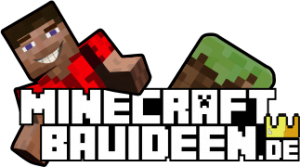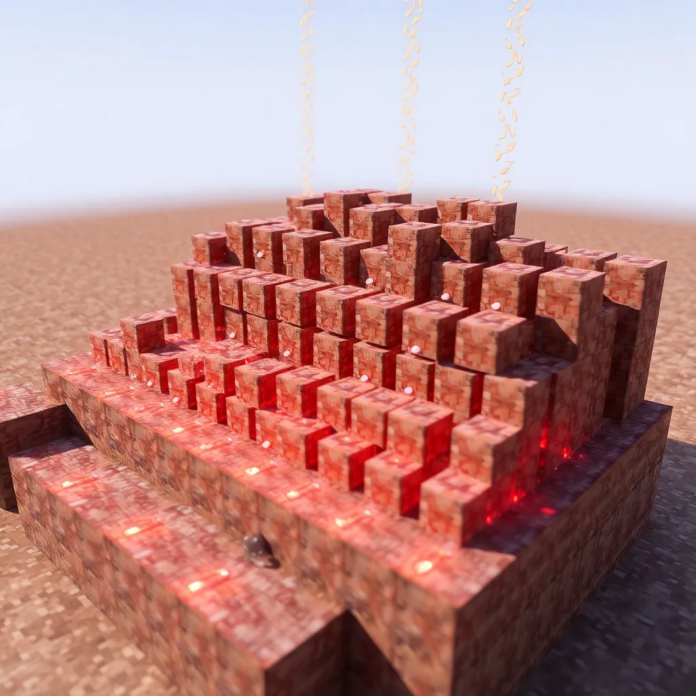Introduction to Minecraft Redstone music
Minecraft offers a fascinating world of possibilities, and one of the most creative challenges is creating music using redstone circuits. Redstone music in Minecraft uses the game's complex mechanics to create melodies and rhythms. In this article, we'll dive deep into the world of Minecraft redstone music and show you how to compose your own songs and bring them to life.
Important Redstone components for music
At the heart of musical creations in Minecraft are the note blocks. Each note block can produce different sounds depending on how often it is clicked. Combined with other Redstone components, players can create amazing musical constructions. The most important components include:
- Redstone dust: Transmits signals between the components.
- Redstone-Repeter: Amplifies and delays signals, which is crucial for timing.
- Redstone comparators: Enable more complex signal processing.
- Note blocks: The basis for creating musical tones and melodies.
Basics of building a Redstone music system
To start building your own Redstone music system, you first need a basic understanding of the Redstone mechanics. Note blocks act as the musical instruments in your setup and can be set to different pitches. Combining these blocks with redstone dust and other components allows you to create complex musical sequences.
Steps to create your own song
The first step in creating a song is planning. Think about the melody you want to play and what the rhythm should look like. It can be helpful to write down the notes on paper or in a digital sheet music program. Keep in mind that Minecraft offers 25 different pitches per note block, which corresponds to a range of just over two octaves.
- Planning the melody: Sketch out the desired melody and rhythm.
- Arrangement of the note blocks: Place the note blocks in the desired order.
- Connection with redstone dust: Connect the note blocks with redstone dust to transmit the signals.
- Activation of the circuit: Add a lever or button to start the circuit.
Use of redstone repeaters for timing and rhythm
To create more complex melodies, you need to work with timing and delays. Redstone repeaters are essential for this, as they can delay signals by 1 to 4 ticks, with one tick being approximately 0.1 seconds. By cleverly placing repeaters, you can control the rhythm of your song and activate different note blocks at different times. This gives you more precise control over the musical sequences and adds to the complexity of your piece.
Advanced techniques for complex melodies
For advanced compositions, you can stack multiple layers of redstone circuits on top of each other. This allows you to create different instrument tracks that play simultaneously. In addition, the block under a note block influences the sound. For example, wood produces a guitar sound, while stone produces a bass sound. By using different materials, you can create a richer and more varied soundscape.
- Multi-layer circuits: Create separate layers for different instruments.
- Choice of material: Experiment with different blocks under the note blocks for different sounds.
- Dynamic changes: Use switches and other mechanisms to change the music throughout the game.
Optimization of space requirements in redstone circuits
An important aspect of building redstone music is optimizing space. Try to make your circuits as compact as possible without compromising functionality. This can be a challenge, especially with longer or more complex pieces, but it's an essential part of the learning process. Compact designs not only make it easier to manage your music system, but also reduce the amount of screen space they take up.
Adding visual elements to your music system
To make your creation even more impressive, you can add visual elements. Redstone lights that light up to the beat of the music or moving parts that move to the melody add an extra dimension to your music installation. These visual effects make your installation not only audible but also visually impressive and can serve as a form of synchronization between visual and auditory art.
- Redstone lamps: Synchronize the flashing of the lights with the music for visual effects.
- Movable mechanisms: Implement moving blocks or decorative elements that move to the rhythm of the music.
- Use of colors: Use different colored blocks to increase the visual variety.
Automatic playback systems for continuous music
For particularly ambitious projects, it is possible to build automatic playback systems. These use loop constructions to play songs continuously. Such systems require advanced Redstone knowledge, but can deliver extremely impressive results. Automatic playback systems make it possible to enjoy music continuously without manual intervention, which is particularly useful for longer event or background music.
Use of command blocks in redstone music projects
Another interesting technique is the use of Command blocks in conjunction with Redstone. Although strictly speaking this is no longer pure redstone music, it opens up even more possibilities for complex musical creations. For example, command blocks can be used to create particle effects or teleport the player while the music is playing. This leads to an even more immersive and dynamic musical experience.
Tips for improving your Redstone music skills
Creating redstone music in Minecraft takes time and patience. Here are some tips to improve your skills:
- Experiment regularly: Try out different circuit designs and music styles to get a feel for the possibilities.
- Learn from others: Study and recreate other players' redstone music creations to learn new techniques.
- Take time for planning: A well-planned composition is easier to implement and leads to better results.
- Use tutorials: There are numerous online tutorials and videos that provide step-by-step instructions.
Using the Minecraft community for inspiration and collaboration
The Minecraft community offers numerous platforms where you can share your Redstone music projects and receive feedback. Forums, YouTube and Twitch are great places to showcase your creations to a wider audience. By exchanging ideas with others, you can get valuable tips and gather new inspiration for your projects. Shared projects also promote creativity and the exchange of knowledge within the community.
Different musical styles with Redstone
Redstone music in Minecraft is not limited to a specific genre. You can try out different musical styles, from classical melodies to modern electronic beats. By customizing the note blocks and redstone circuits, you can vary the sound and tempo of your pieces. This versatility allows you to fully utilize your musical creativity and create unique compositions.
Resources and tutorials for aspiring redstone musicians
There are a variety of resources that can help you get started with redstone music. Online tutorials, video guides and community forums offer valuable information and step-by-step instructions. There are also specialized websites and YouTube channels dedicated exclusively to redstone music that present advanced techniques and inspiring examples.
Challenges and solutions in building complex redstone music
Various challenges can arise when setting up complex redstone music projects. These include the correct synchronization of the note blocks, the timing of the redstone repeaters and the efficient use of space. Here are some solutions:
- Synchronization: Use additional repeaters to ensure that all note blocks are activated at the same time.
- Timing: Experiment with different repeater delays to achieve the desired rhythm pattern.
- Space optimization: Plan your circuits carefully and use vertical levels to create more space.
Examples of successful Redstone music projects
Many players have realized impressive Redstone music projects in Minecraft. One well-known example is the recreation of well-known songs such as "We Will Rock You" or "Happy Birthday", which were realized with the help of Redstone circuits and music blocks. Such projects not only serve as inspiration, but also demonstrate the enormous potential and creativity of Redstone music.
The future of redstone music in Minecraft
The redstone music scene in Minecraft is constantly evolving. As the game continues to evolve and new Redstone components are introduced, new opportunities for creative musical projects are constantly opening up. The sharing of knowledge within the community and the increasing complexity of the music systems promise an exciting future for Redstone musicians of all experience levels.
Conclusion: The art of redstone music in Minecraft
In conclusion, redstone music in Minecraft is a fascinating fusion of technology and art. It offers a unique way to express musical creativity in a virtual world. Whether you're an experienced musician or just starting to explore the world of music, Minecraft redstone music provides a platform for you to bring your ideas to life.
Creating redstone music in Minecraft is more than just a game - it's an art form that requires patience, creativity and technical understanding. With every project you complete, you'll not only improve your skills in Minecraft, but also develop a deeper understanding of music and composition. So grab your Redstone components, let your imagination run wild and begin your journey into the fascinating world of Minecraft Redstone music!





